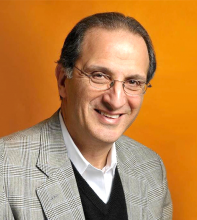You are here
The importance of knowing Bethlehem
Dec 31,2019 - Last updated at Dec 31,2019
I have long been troubled by the way so many believing Christians in the West have either been ignorant of or turned their backs on the plight of Palestinians, both Christian and Muslim. Right-wing Evangelicals, under the sway of heretical theology, are so blinded by their obsession with Israel that they cannot see Israel's victims. Other Western Christians simply just do not know or about the people of Palestine.
I find this state of affairs to always be distressing, but especially so at Christmas time, since the Christmas story we celebrate not only took place in that land, it continues to define the lives of the Palestinians who live in places like Bethlehem and Nazareth.
When Western Christians think of those communities, the pictures that come to mind are the mythologised images that are the product of our movies, artists, songs and stories. That Bethlehem is a real place with real people is lost on them.
It was with this thought in mind, that several years ago I wrote a reflection on the importance of knowing the real Bethlehem.
Bethlehem has always loomed large in our imagination. For generations, the feelings evoked by this town have been captured in multiple art forms, serving to inspire both believers and non-believers with its message of hope and the joyful promise of new life.
For those who do not know the place, Bethlehem possesses a timeless quality, derived from these artistic creations. It is a place of mystery and contradictions. It is the peaceful little town that played an out-sized role in history; the birthplace of Jesus, the child born in a cave, heralded by angels and visited by shepherds and kings. For hundreds of millions of Christians world-wide, these are the images that define Bethlehem. Sadly, in reality, all of this is but a fantasy, since the pressures of contemporary daily life in this historic community paint a remarkably different portrait.
Suffering under Israeli military occupation since 1967, Bethlehem has slowly been strangled. It has lost most of its land to settlement construction. It is hemmed in by a 30-foot-high concrete wall, stripped of its resources and denied access to external markets. As a result, 25 per cent of Bethlehem's people are unemployed, while 35 per cent live below the poverty level.
Before the occupation, for example, a few thousand Palestinians in Bethlehem were employed as craftsmen known worldwide for their olive-wood and mother-of-pearl artifacts. Today, denied the ability to freely export and hurt by the instability of military rule, that industry employs only a few hundred. Similarly, Bethlehem's tourism has suffered. Israeli companies that dominate the industry bring tourists to stay in hotels in areas they control, making only day trips to Bethlehem's holy places. The crowds come to the town for a few hours, but their revenue disproportionately goes to the Israelis.
Bethlehem has lost so much land to Israeli confiscation for settlement construction that it can no longer expand. Now it can only build vertically. As a result, what is left of Bethlehem has become overcrowded, with traffic congesting its narrow streets.
Israeli leaders often complain that they must expand their settlements further so that their youth can find housing. And they insist that they must continue to build their wall, in order to protect the residents of these illegal colonies. What they do not say is that the wall is built through Palestinian-owned lands, cutting villages from their properties, and the expansion of the mammoth settlement colonies at Har Homa, Gilo, Har Gilo, Betar Ilit, Giva'ot and more are occurring at the expense of Palestinians living in the Bethlehem region.
The Israelis call these colonies “neighbourhoods of Jerusalem”. This is but a crude effort to obfuscate the reality that they are all built on Bethlehem area land–illegally confiscated by Israel and then unilaterally annexed to what they call “Greater Jerusalem”. As a result, Palestinians now retain only tenuous control of 13 per cent of the Bethlehem region, with the Israelis still threatening to take more. In fact, the 22 Israeli settlements built in the Bethlehem region, the roads that connect them and the wall that protects them were all built on land taken from Palestinians. And the new expansion plans for Jewish-only housing and the extension of the wall simply means that more land will be taken, leaving less for Palestinians.
Look at a map and you will see that Bethlehem is but a few miles from Jerusalem. As late as 20 years ago, standing near Manger Square, one could look out over a green space, the hill of Jabal Abu Ghnaim, and see the Holy City. The trip, by car, was only 15 minutes. Today that view has been obliterated by the 30-foot wall, and that green space, where Palestinian families once picnicked, is now the site of the monstrous concrete settlement of Har Homa, home to 25,000 Israelis. As a result of the settlements, Jewish-only roads and the wall, an entire generation of young Palestinians have grown up never having been to Jerusalem. Not only that, but the entire population has been cut off from the city that was their metropole, the hub that provided them medical, social, educational services, markets and sources of employment, and venues for cultural and spiritual enrichment. All that is now beyond their reach.
Today, the Palestinian population of the Bethlehem region is 210,000. At the same time, there are over 165,000 Israeli settlers, with plans to significantly increase that number in the near future. Facing this human onslaught, Palestinians have taken their case to the World Court, which ruled that the settlements and the wall are illegal, in clear violation of international laws designed after World War II to protect the rights of people living in territories occupied in time of war. In response, Israel, with the backing of the US, has acted with impunity continuing to build, to move its people into Palestinian areas, and to take more land.
All this is happening while Christians in the West blissfully sing of the “peaceful little town”, not hearing the cries of its people. More disturbing is the degree to which policymakers and those who should know better deliberately turn a deaf ear to Palestinian appeals for recognition of their plight, thereby enabling the continuation of this injustice.
Meanwhile, in Bethlehem, hope gives way to despair and thoughts of peace to feelings of anger. Attention must be paid to this tragedy.
Just for a moment, think of Bethlehem and instead of imagining the shepherds and the angels, think of life as it is in that town today. Imagine what you would feel if you lived in Bethlehem and saw your land taken to make way for homes and roads for another people. And imagine how you would feel if your sons and daughters were forced into exile to find employment, to make way for the sons and daughters of another people who have come to live on your land. Then listen carefully and hear the cry of the people of that little town.
James J. Zogby is president of the Washington-based Arab American Institute











